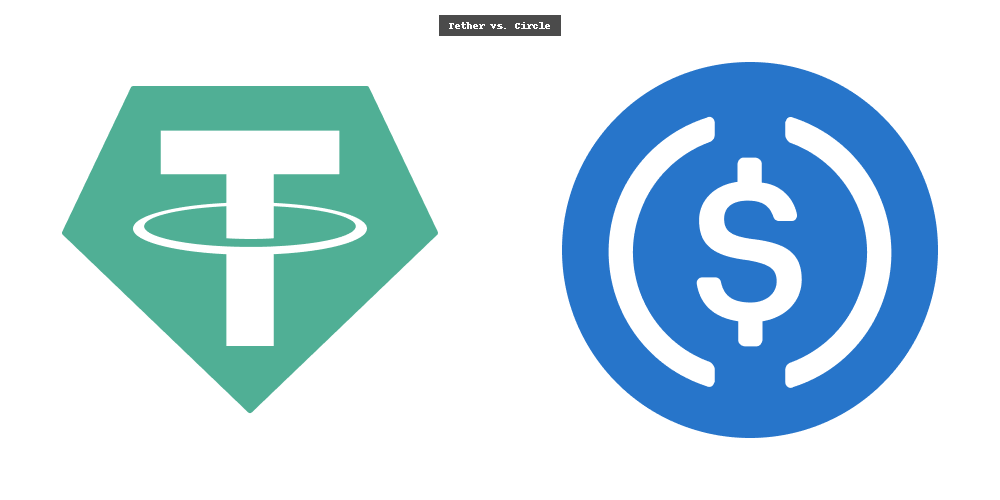Circle vs. Tether: Stablecoin Giants on a Collision Course

Stablecoins are the quiet backbone of crypto. While everyone's watching Bitcoin hit new highs or Ethereum's latest upgrade, these dollar-pegged tokens are doing the heavy lifting—facilitating trades, enabling DeFi, and basically keeping the whole crypto economy liquid.
Two giants dominate this space, and they couldn't be more different in their approaches. Circle's USDC and Tether's USDT are both racing to be the default dollar online, but they're taking completely different routes to get there.
The Great Strategic Split
Circle (USDC) is playing the long game with institutions. They're the kid who always did their homework on time—compliance-first, regulation-friendly, and desperate to get teacher's approval. Circle has spent years building relationships with traditional finance, getting exchange listings at major platforms, and creating deep fintech rails that banks actually trust. They publish monthly attestations, work closely with regulators, and basically do everything by the book.
Tether (USDT), on the other hand, is like that friend who somehow always gets into the best parties without an invitation. They prioritize liquidity above all else, focusing on getting USDT everywhere users actually are. While Circle was busy courting compliance officers, Tether was embedding itself in emerging markets, crypto exchanges, and anywhere people needed quick dollar access. Their approach? Move fast, integrate everywhere, ask for forgiveness later.
The numbers tell the story. USDT still holds the majority of stablecoin market cap, but USDC has been steadily gaining ground, especially in DeFi protocols and institutional settings. It's like watching a tortoise and hare situation, except both animals are sprinting.
What Actually Changes the Game
The real competition isn't just about who has more tokens in circulation. It's about infrastructure.
Listings matter huge. When a major exchange adds native support for your stablecoin, that's instant legitimacy and easier onboarding. Circle has been methodical here, working through proper channels. Tether has been more opportunistic, showing up wherever there's demand.
Treasury integrations are becoming crucial. Corporate treasuries parking cash in stablecoins want maximum safety and compliance. Circle wins here hands down, their regulatory approach gives CFOs something to point to when auditors ask questions.
Banking rails determine how easily people can get in and out of crypto. Circle's partnerships with traditional banks create smoother fiat on/off ramps. Tether's strength is in crypto-to-crypto liquidity, keeping things moving within the ecosystem.
Then there's chain footprint—how many blockchains support each stablecoin natively. Both are playing the multi-chain game hard, but user experience varies wildly depending on where you're trying to use your dollars.
The real kicker? User experience. Fees, transaction speed, and simply being where users already are often matter more than compliance theater. If you're a trader in Southeast Asia who needs to move value quickly, you probably don't care about Circle's regulatory gold stars—you care about whether your stablecoin works on the exchange you're using.
It's enterprise comfort versus grassroots liquidity, and both strategies have merit.
The Mitosis Angle
Here's where it gets interesting for the future. Regardless of which stablecoin "wins" (and honestly, there might not be a single winner), the real problem users face is fragmentation.
Your USDC on Ethereum doesn't automatically work on Polygon. Your USDT on Tron can't seamlessly interact with Arbitrum DeFi. Users constantly face "which chain?" headaches instead of focusing on "what can I do with my money?"
This is where Mitosis comes in with a different approach entirely. Instead of picking sides in the Circle vs. Tether battle, Mitosis turns "stablecoin parked here" into "stablecoin working everywhere."
Through programmable receipts and cross-chain strategies, your stablecoins become chain-agnostic. Park USDC on one chain, but have it automatically work across multiple chains for the best yields, lowest fees, or whatever strategy you want to run. Same with USDT, or honestly, any stablecoin.
The result? Users stop worrying about which stablecoin on which chain, and start focusing on what they actually want to do with their money. DeFi strategies, payments, savings—whatever. The underlying infrastructure handles the complexity.
The Real Question
The dollar that lives on-chain will probably have many logos. USDC, USDT, maybe others we haven't seen yet. The compliance-first approach will win in some contexts, the liquidity-first approach in others.
But here's the thing that keeps me up at night: if your stablecoin could auto-route to the best use across chains—finding the highest yield, lowest fees, or whatever optimization you want—would the brand even matter anymore?
Maybe the real competition isn't between Circle and Tether. Maybe it's between branded stablecoins and infrastructure that makes the brand irrelevant.
The stablecoin giants are on a collision course, but the real winner might be whoever figures out how to make users stop thinking about stablecoins at all—and just focus on using their money how they want, wherever they want, without friction.
That's a different game entirely.



Comments ()